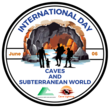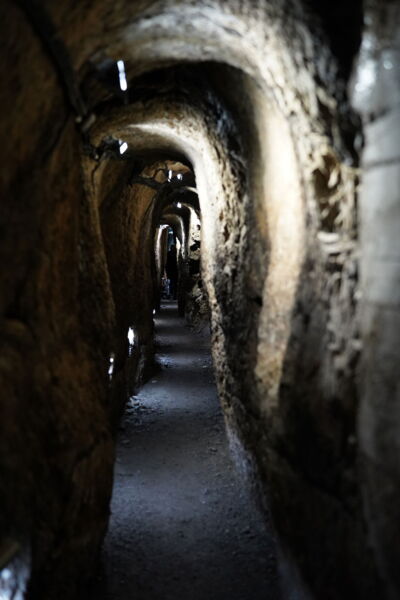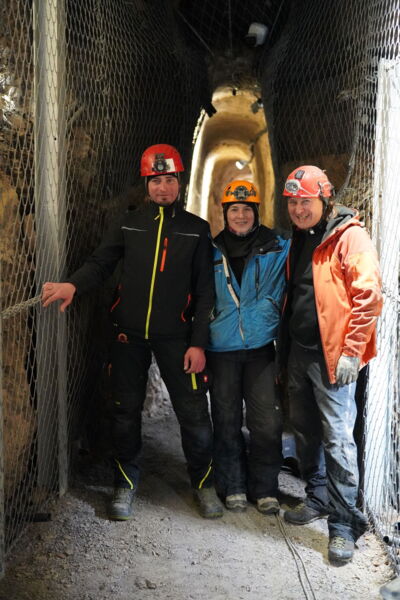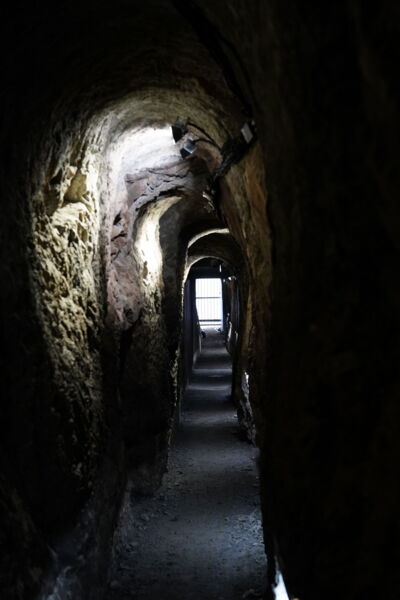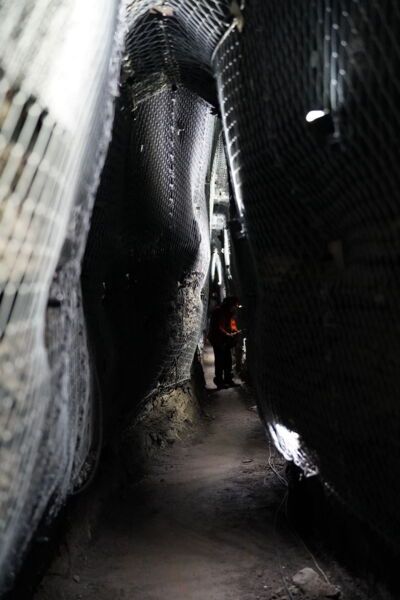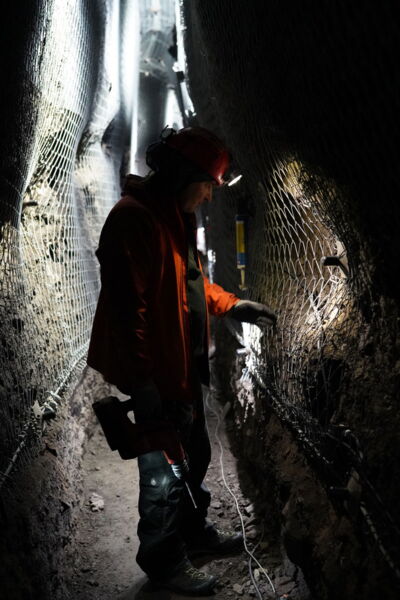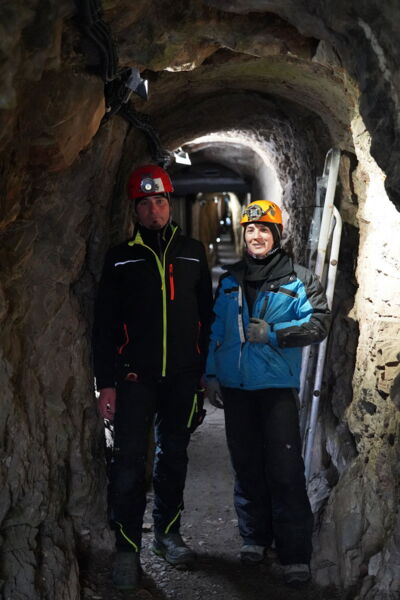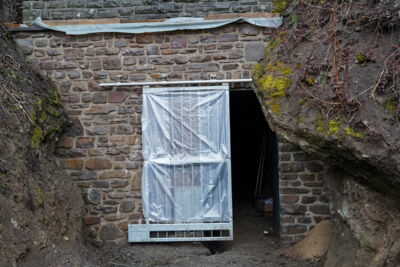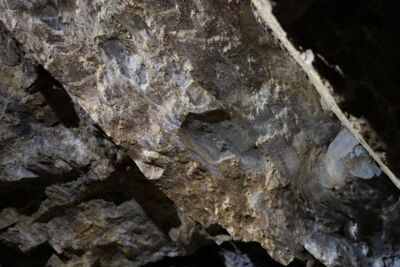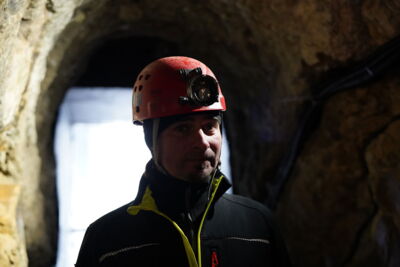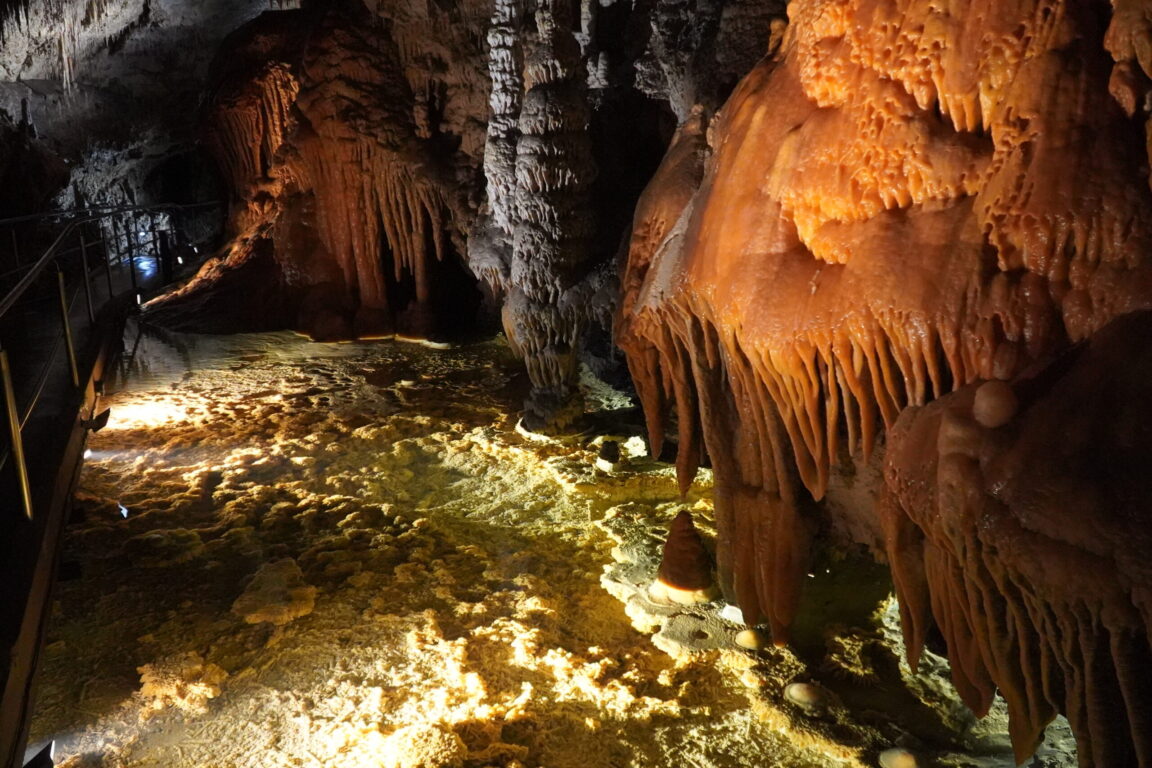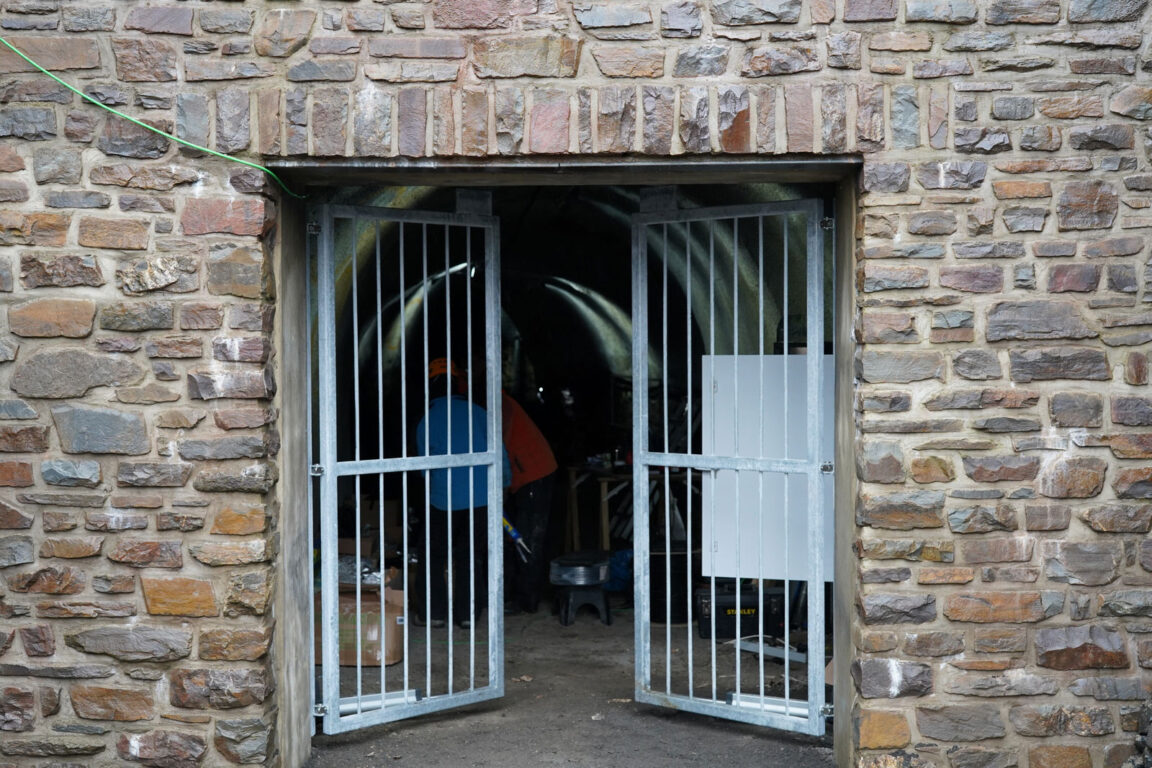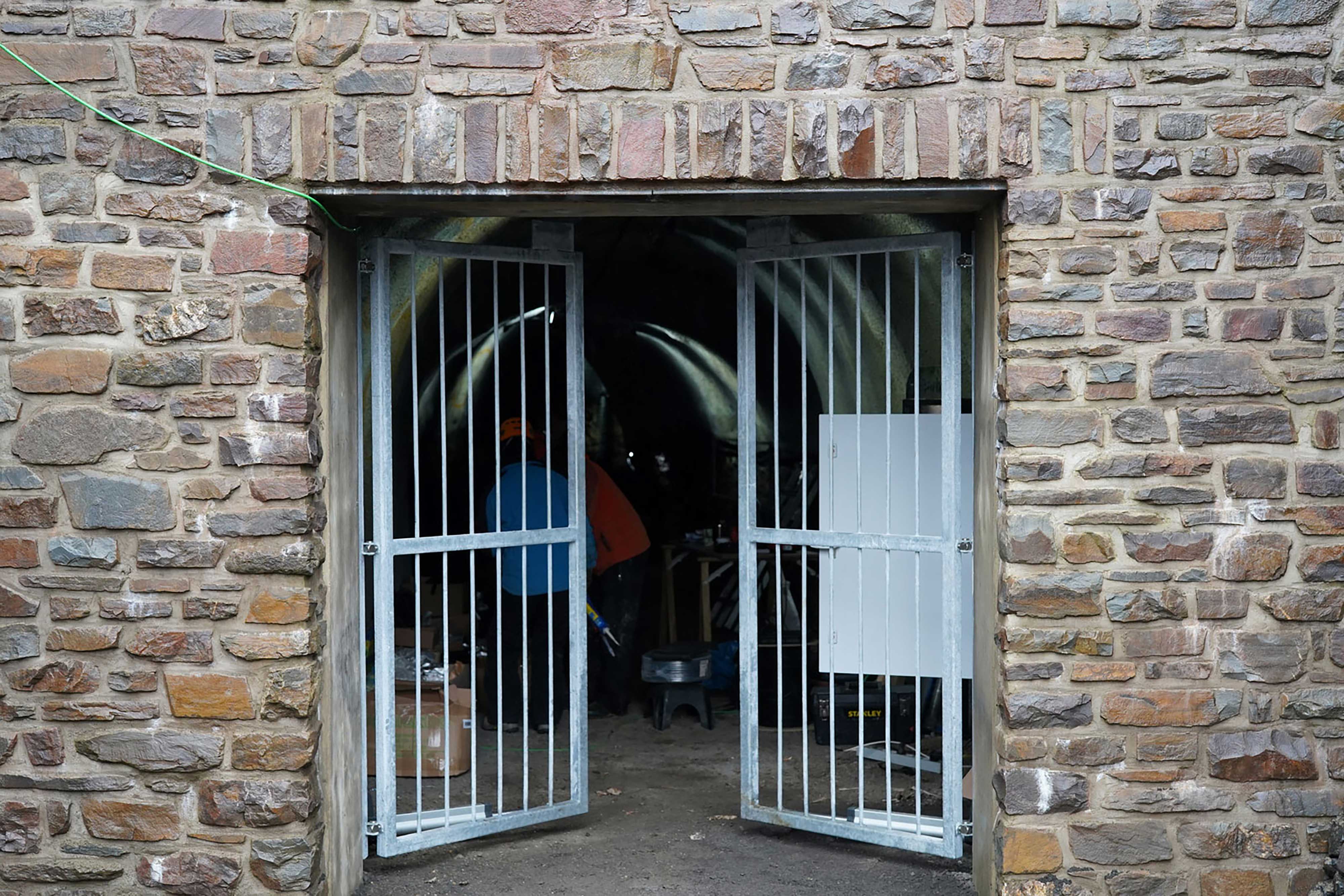
The light throughout the tunnel: A worldwide uniqueness!
Illumination of a medieval tunnel connecting lakes in Ulmener Maar, Ulmen, Germany.
The light throughout the tunnel: A worldwide uniqueness!
Some history:
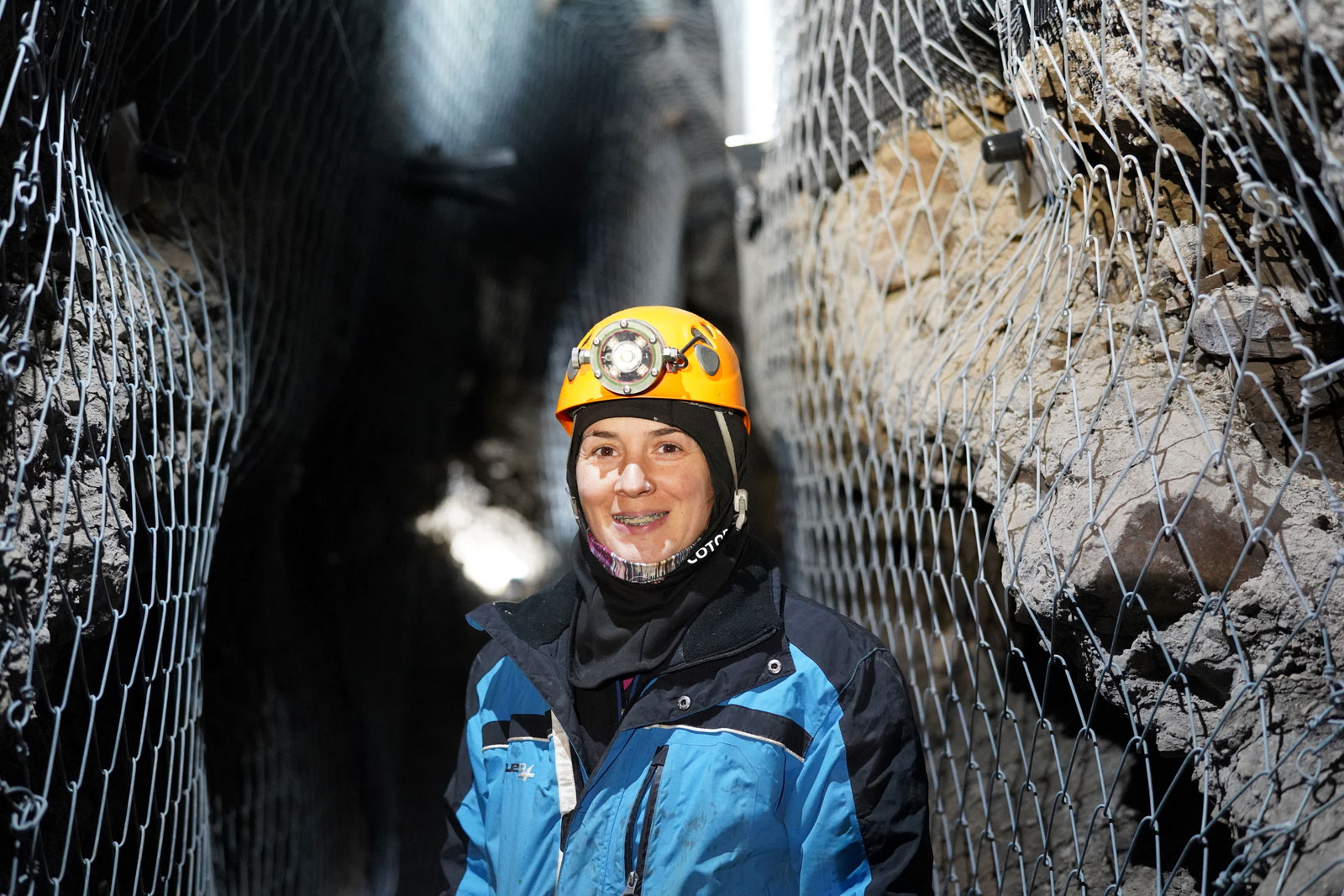
An ancient and unique tunnel around the world is found in a small village called Ulmen, located inside the Eifel and the Volcanic geopark of Rhineland-Palatinate state (east of Germany). The tunnel has two entrances and the reason for its uniqueness is because it connects two maars, the old maar Jungferweihers and the Ulmener Maar, the youngest maar in Central Europe. Which was caused by the last volcanic eruption in Germany 10900 years ago.
This medieval tunnel is 124 m long, 1.5 to 4 m high and it is known as the Roman tunnel. However, studies by the University of Trier have shown that the tunnel comes from the High Middle Ages. At first, this tunnel was built as a rare large-scale water management system during a high expansion of the Ulmen Castle.
Between 1970 and 1990 it was filled in from the side of the Jungferweihers for unknown reasons until now. Two decades later, in 2012, came up the idea of opening the tunnel for tourism and one decade later in March of 2022 began the construction project to open its door to the public now in April of 2023.
This project in Ulmen is the pilot project in the region and opens up the experience of the Vulkaneifel landscape to everybody. It is implemented as a barrier-free project.
The Vulkaneifel Nature Park and UNESCO Global Geopark have supported the project from the start.
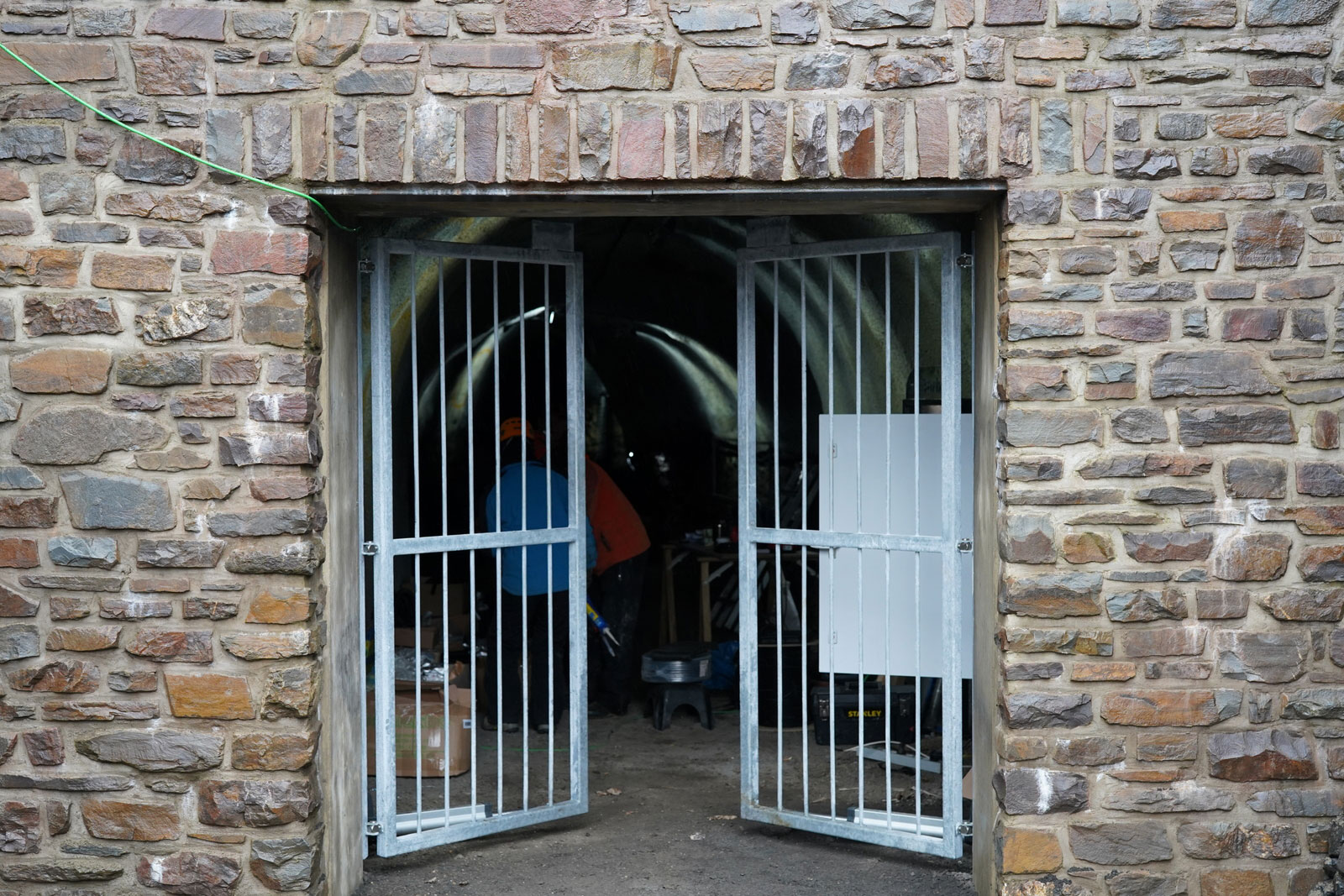
Beginning of the construction project and the highlights.
First, the unblocking of Jungferweihers entrance was done. Before the construction tasks, the tunnel was flooded, so proceeded to the channelling of water below it.
According to the experts, not only the unclear securing of this shaft, but in particular the volcanic rock that forms the half part of the tunnel is breaking off in a flat manner around it, posing a danger. For this reason, the responsible companies decided to build safe and stable entrances with anchors and external and internal reinforcement metallic networks, protecting the walls and ceiling from Jungferweihers entrance to the half of the tunnel approximately.
Automatic doors and security cameras have been installed. All of this to protect the visitors and make them feel safe. In addition, this tunnel has been adapted for people with restricted mobility, accessible from the Jungferweiher from a depth of up to 23 meters. All the process is complete with information panels about the history and geology of the zone and our illumination system of Cave Lighting.
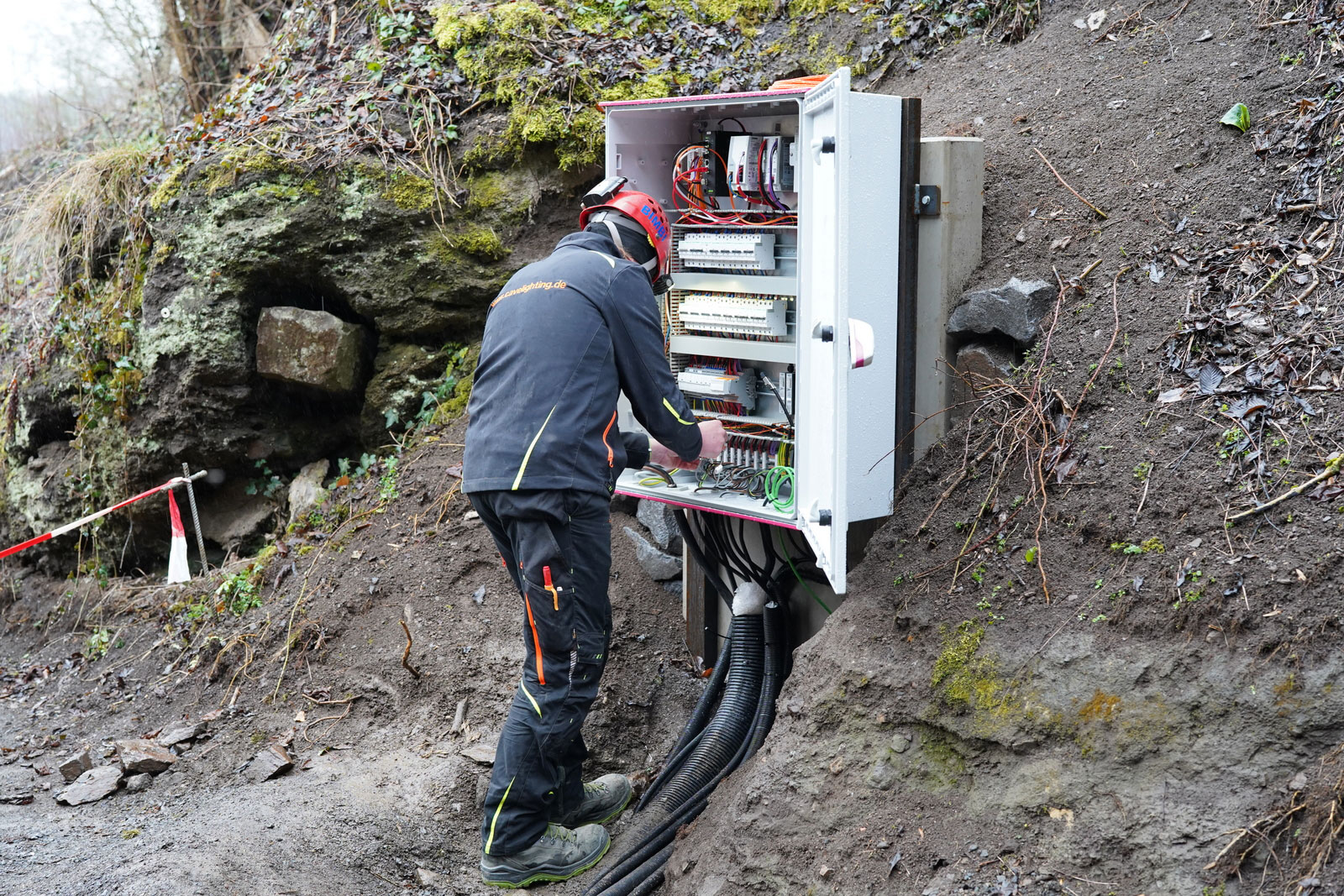
Illumination system of Cave Lighting
We have created the perfect environment to enjoy the history and geology throughout the tunnel in only one month.
In this project, our illumination system consisted of 107 luminaries, 2 big power cabinets and hundreds of meters of wiring. Two principal kinds of illumination were selected: the pathway luminaries focused on the floor, and scenic luminaries to light the walls and ceiling of the tunnel.
The ground path was illuminated with CL-LMT tube lamps of neutral. These have a housing formed by a plastic tube transparent internal potting, providing an excellent protection rate and stable light output. This kind of lamp has 10 LED sources and 60 lm of luminous flux, spending only 1W per lamp. In their installation, they have always been covered by a metallic structure that protects the lamp and does not let it see the direct light at the tourist eyes.
On the other hand, 7 types of scenic luminaries have been used, named CL-LSQ3. They vary according to the colour (cool white or outdoor white) and the beam angle: narrow (12°), medium (25°), wide (40°), very wide (70°) and flood (120°). These lamps have 3 or 9 LED sources, spending 1,5W to 3W per lamp respectively. They have extra-compact and extremely rugged housing that allows the best camouflage of the luminary so it disappears in the surroundings.
All the luminaries installed support ranges of -25°C to +45° C and ensure a smooth and pleasant journey throughout the tunnel.
In this project, the cabling was installed on the upper part of the walls. All the cables were protected with plastic pipes of different sizes according to cable diameter. Plastic clips and bridles were used to ensure a strong hold on the wall.
In addition, the system in the tunnel was equipped with remote access, managing the light and cameras with remote control. We have installed 5 motion sensors that only switch on when the tourist passes in front of them.
An App for managing the control to open and close the automatic doors, to activate the lighting system, have been provided to our customers.
Thanks to this lighting, we can enjoy the unique and spectacular geology inside the tunnel. The rocks are formed by, first of all bedrock (clay, silt and sandstone of the Lower Devonian - 419 million to 393 million years ago) from the Ulmener Maar entrance, which is then overlaid by stratified volcanic rock formed by 15-20 m of volcanic ashes and solid basalts from Jungferweihers entrance. The sediments of the volcanic lakes are exceptionally well preserved and provide precise information about the ecosystems of the last millennia.
Our lighting allows you to perfectly see different deposits of both maars throughout the tunnel, which contact between Lower Devonian rocks and volcanic ashes can be found at the final of the metallic net that is present since Jungferweihers entrance until the middle of the tunnel.
There is no doubt that our own lighting system makes the tourist enjoy the experience to the fullest of his walk through the tunnel, experiencing a unique history and geology in the world.
What is a maar?
It is a geological structure produced by an explosive eruption because the magma has found groundwater. Big crater is formed and filled with water as a result and is called MAAR.
The geological process in 3 easy steps:
1- Magma rises to the surface and into contact with the groundwater that circulates through layers of pre-existent rocks. Powerful and explosive eruptions occur.
2- A cavity is formed at the explosion centre, which opens directly onto an explosion vent. The overlying rocks above the cavity collapse and a crater is formed.
3- Groundwater inflow fills the crater. The result is a crater filled with water (lake), named MAAR.
Resulting rocks: two types of rocks occur, the ashes produced by the explosive eruption, and then the magma that continues to rise solidifies to form basalt.
